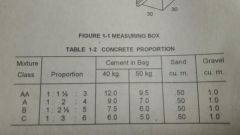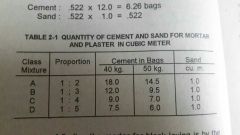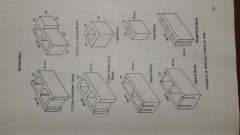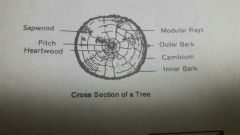![]()
![]()
![]()
Use LEFT and RIGHT arrow keys to navigate between flashcards;
Use UP and DOWN arrow keys to flip the card;
H to show hint;
A reads text to speech;
86 Cards in this Set
- Front
- Back
|
Permanent markers at a point of determined location; reference points for surveys |
Benchmark |
|
|
Meaning of GIS |
Geographic Information System |
|
|
Sub-systems of GIS |
1. Data input 2. Data storage, retrieval and representation 3. Data management, transformation and analysis 4. Data reporting and product generation |
|
|
Horizontal angle between true north and magnetic north |
Magnetic declination |
|
|
The placement of markers on a site to identify certain locations with corresponding information. |
Staking |
|
|
A device used to measure the height of a landform through a fixed measuring eye sight device |
Hand level |
|
|
Horizontal Layout Methods |
1. Metes and bounds 2. Coordinates 3. Dimensions 4. Station offsets |
|
|
Meaning of PERT-CPM |
Programme Evaluation Review Technique - Critical Path Method |
|
|
Clay soil preparation vs. Granular soil preparation |
CLAY SOIL: Compaction using a sheep foot roller because vibration may liquefy the soil. High density compaction may require 8 to 12 passes GRANULAR SOIL: Must be rolled and vibrated using a steel or rubber tire roller |
|
|
General Fill vs. Backfill vs. Structural Fill |
GENERAL FILL: Typically subsoil taken from excavated portions of the site; controlled lifts and consolidated according to soil type
BACKFILL: Granular fill is typically placed in controlled lifts in trenches or against foundation walls to prevent differential settlement (BORROW FILL)
STRUCTURAL FILL: Typically placed under building floor slabs and requires a graded aggregate to be placed in controlled lifts of 0.1 to 0.15 meters under stringent rating specifications (BASE COURSE MTRLS) |
|
|
Piers and foundation settle unequally |
Differential settlement |
|
|
Different angles of repose |

|
|
|
Type of grading to accommodate open playfields, parking areas, general open spaces: |
Area draining |
|
|
Type of grading to accommodate pedestrian transition and vehicular transfer points as found at building entrances and drop-off areas: |
Nodal grading |
|
|
Type of grading to accommodate linear path and road grading |
Linear grading |
|
|
7 types of Specifications |
1. Performance 2. Brand name 3. Closed (single) 4. Closed (single) 5. Open 6. Reference 7. Combination |
|
|
3-Part Section Format of Specifications |
Part 1: General Part 2: Product Part 3: Execution |
|
|
Meaning of GFRC |
Glass fiber reinforced concrete |
|
|
Concrete Proportion Classes |

|
|
|
6 types of concrete |
1. Ordinary Portland Cement 2. Rapid Heating Portland Cement 3. Blast Furnance or Sulfate Cement 4. Low Heat Portland Cement 5. Portland Pozzolan Cement 6. High Alumina Cement |
|
|
Coarse vs. Fine Aggregate |
Coarse: retained in 5mm sieve Fine: passing on a 5mm sieve |
|
|
When a coarse aggregate is small enough for the concrete mixture to flow smoothly around a reinforcement. |
Workability of concrete |
|
|
A strong horizontal piece of reinforced concrete for spanning and supporting weights. |
Beam |
|
|
A beam that is carrying or supporting another beam. |
Girder |
|
|
Load Bearing CHB thickness |
0.15 to 0.2 meters |
|
|
Non-load bearing CHB thickness |
0.07 to 0.1 meters |
|
|
Typical dimensions of CHB |
H: 0.2 meters W: 0.1 or 0.2 meters L: 0.4 meters |
|
|
1 square meter requires _______ pieces of CHB |
12.5 pieces |
|
|
A mixture of cement, sand and water; used as bonding materials in installing masonry blocks and other various plastering works. |
Cement mortar |
|
|
Mortar and Plaster Portion Classes |

|
|
|
Types of CHB |

1. Single End Block 2. Stretcher Block 3. Half Block 4. L- Block 5. Beam Block 6. 3 Hollow Core (Typical) |
|
|
Thickness of mortar for block laying of CHB |
12 mm |
|
|
Cement + sand |
Mortar |
|
|
Cement + sand + gravel |
Concrete |
|
|
Cement + sand + gravel + rebars |
Reinforced concrete |
|
|
Thickness of mortar for block laying of Adobe |
16 mm |
|
|
It avoids the building up of water behind a retaining wall |
Weep hole or collector deainage system |
|
|
Loose stones used to form a foundation for a breakwater or other structures; an erosion control mechanism with weep holes at intervals |
Riprap |
|
|
Cement grout curing period |
3 days |
|
|
Used to give permanent protection and support to sea walls, river banks, culverts, reserviors, road bridges and many other structures in civil engineering works. |
Gabions and slope protection mattresses |
|
|
Box shaped containers made of tough woven hexagonal netting strengthened by selvedges of heavier wires. |
Gabions |
|
|
A low wall or sturdy timber barrier built out into the sea from a beach to check erosion and drifting. |
Groyne |
|
|
A method of reinforcing cracks in highway pavement by inserting steel in slot cuts across the cuts. It is a technique that address faulting in older jointed plain concrete pavements. |
Dowel bars retrofit |
|
|
Stirrups vs. Lateral ties |
Stirrups: Beams and footings Lateral ties: columns |
|
|
Commercial length of rebars |
6 meters to 13.5 meters |
|
|
Refers to gauge no. 16 galvanized iron wire popularly known as ______ |
G.I. Tie Wire |
|
|
One roll of tie wire equals _______ |
45 kg or approximately 2385 meters |
|
|
Common tie wire reinforcement diameter for CHB |
10, 12, 16 mm diameter |
|
|
Bend of footing equal _____. |
4 (7.5 cm) |
|
|
The term applied to wood after it has been sawed or sliced into boards, planks, timber etc. |
Lumber |
|
|
Unplaned or undressed lumber |
Rough lumber |
|
|
Dressed lumber wherein the number connotes the smooth side |
S2s: two smooth sides S4s: four smooth sides |
|
|
A kind of rough lumber cut tangent to the annual rings running through the full length of the log containing at least one flat surface. |
Slab |
|
|
A planed lumber having at least one smooth surface |
Surface or Dressed lumber |
|
|
A piece of lumber five inches or larger in its smallest dimension |
Timber |
|
|
A wide piece of lumber from 4 to 5 inches thick |
Plank |
|
|
A piece of lumber less than 4 centimeters thick with at least 10 centimeters wide |
Board |
|
|
A thick piece of lumber |
Flitch |
|
|
When the annual rings are small, the grain or marking which separates the adjacent rings is said to be _______. |
Fine grained (when large, coarse grain) |
|
|
When the direction of the fibers are nearly parallel with the side and edges of the board |
Straight grained |
|
|
A lumber taken from a crooked tree |
Crooked or cross grained |
|
|
Trees that grow from the inside; soft center core and are not preferred for lumbering |
Indigenous |
|
|
Trees that grow outward and preferred for lumbering |
Exogenous (exogens - outer surface) |
|
|
Softwood vs. Hardwood |
Softwood: coniferous, exposed seeds Hardwood: deciduous, encased seeds |
|
|
Cross section of a tree |

|
|
|
Well-graded coarse aggregate number |
No. 10 sieve |
|
|
Curing time of hot mix asphalt |
48 hours |
|
|
Curing time of cold mix asphalt |
1 year |
|
|
Asphalt thickness when applied to aggregates |
75 to 1 mm |
|
|
Load bearing walls CHB thickness |
6" CHBs (CLASS A OR B) |
|
|
Non-load bearing walls CHB thickness |
4" CHBs |
|
|
Common CHB mix |
1/2 bucket water 1 bucket cement 7 bucket sand |
|
|
Common MORTAR Mix |
1 bucket water 1 bucket cement 3 bucket sand |
|
|
Curing time for hot mix asphalt |
48 hours |
|
|
Curing time for CHB |
7 days |
|
|
Mixing time for CHB |
14 to 20 minutes |
|
|
Mixing time for concrete |
30 minutes |
|
|
Minimum crawl space height clearance |
0.6 meters |
|
|
CHB Lintel Beam |
Every 12th course (approximately 2.4 meters) |
|
|
CHB Stiffener column |
Every 4.8 meters |
|
|
Neutral soil pH |
6.6 to 7.3 |
|
|
Soil pH for plants (Steiner) |
5 |
|
|
Soil composition |
25 water 25 air 45 mineral particles 5 organic matter (80-humus; 10-organisms; 10- roots) |
|
|
Fiber saturation point for wood |
30% |
|
|
Equilibrium moisture content |
12 to 16 % |
|
|
Volume of CHB holes |
0.003 cu.m. |

